An African Safari is an amazing experience. Many people think they can only do African Safari Photography if they are an experienced photographer, shooting with an expensive DSLR. Not true. You can do African safari pictures with a point and shoot, phone or any other type of camera that you have. The photos on this page were all taken with a point and shoot camera. Since then, we have graduated to a DSLR and, most recently, a mirrorless camera. In our opinion, the most important technical skill that you need is patience. And, to know when to put your camera down and just watch. The second tip is the most important.
Table of Contents
African Safari Photography: Elephants at a Watering Hole
We came upon a watering hole in Tarangire, Tanzania. There were some elephants arriving and our driver/guide Michael told us if we sat quietly, that they would not notice us. We sat for 45 minutes and watched as the elephants drank, rolled in the mud and waded in the water. There was a very young elephant (about 3 months old) with its mother. At one point they walked about 10 feet from us. It was a thrill to see them that close.
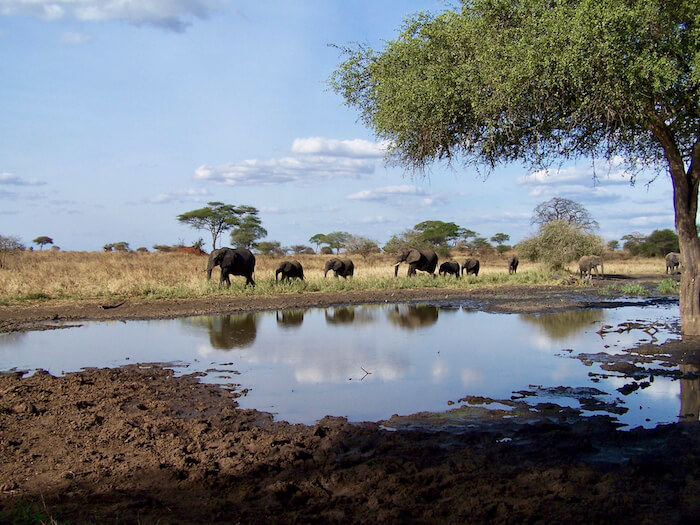
Elephants leaving the Watering Hole, Tarangire
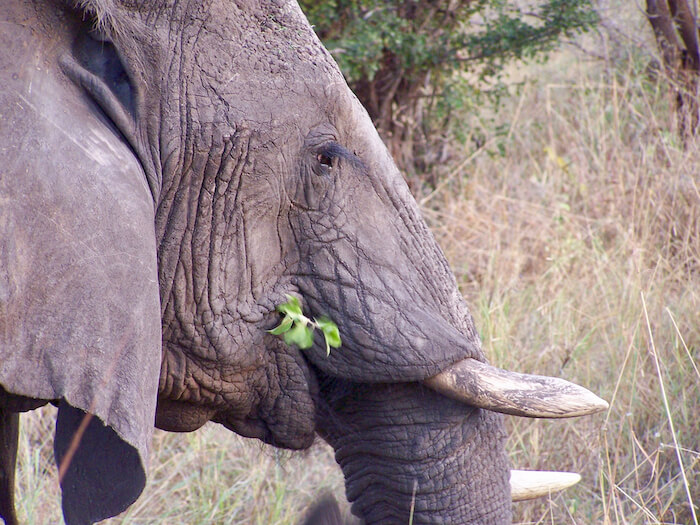
A Bite to Eat
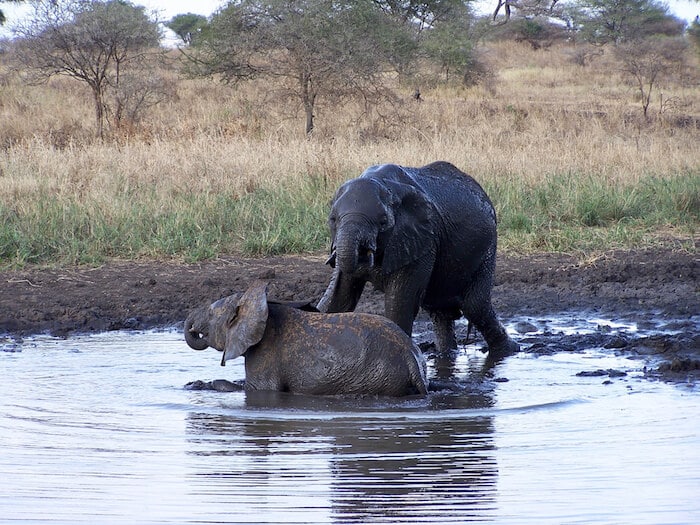
Baby Elephants in the watering hole. The older one is a 2-3 years old.The younger one is about 3 months old.
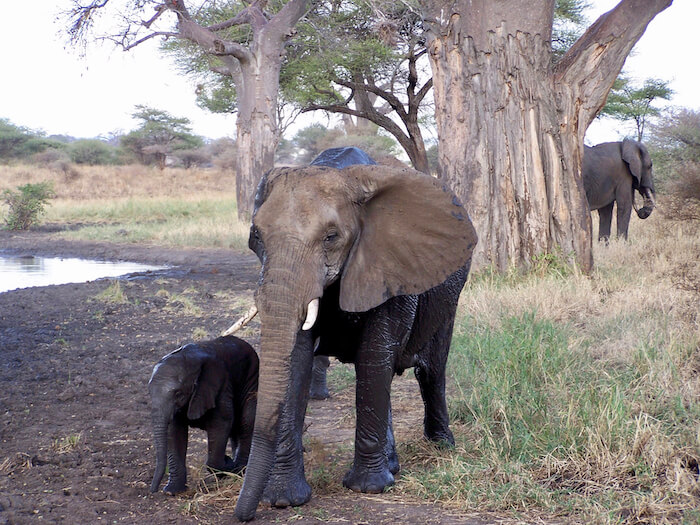
Elephant and a very young baby
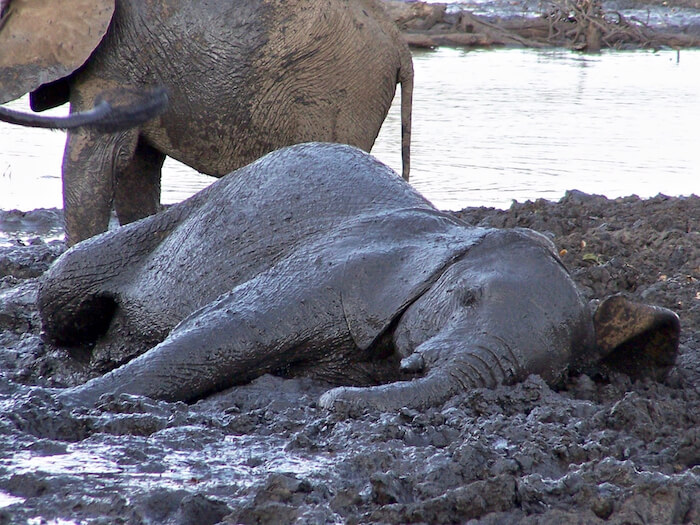
Elephant Bliss in a Mud Bath, Tarangire, Tanzania
This elephant plopped down in the mud. And, we couldn’t resist adding one more.
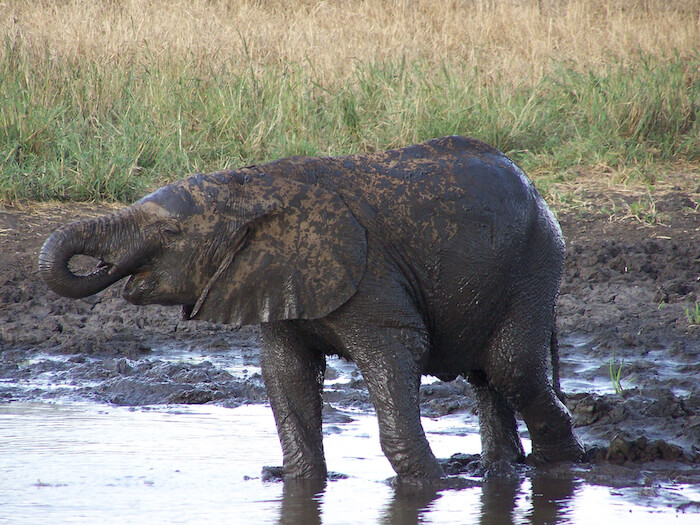
Young Elephant at a Watering Hole, Tarangire, Tanzania
We had another elephant adventure in Borneo.
Want to see more nature photography from a point and shoot camera? Best Bear Viewing Alaska Bear Tour
Rare Black Rhino Patience Rewarded?
Another instance that required much patience was in the Ngorongoro Crater. We came upon a Black Rhino. They are very endangered and there are not many left in the Crater. We were so excited to see one. It was sleeping. We wanted to see it awake, so decided to wait. And wait. And wait. About an hour later, it woke up. We were thrilled. It got up, ate a mouthful of grass. Then peed and walked away. We got an excellent photo of a rhino….peeing.
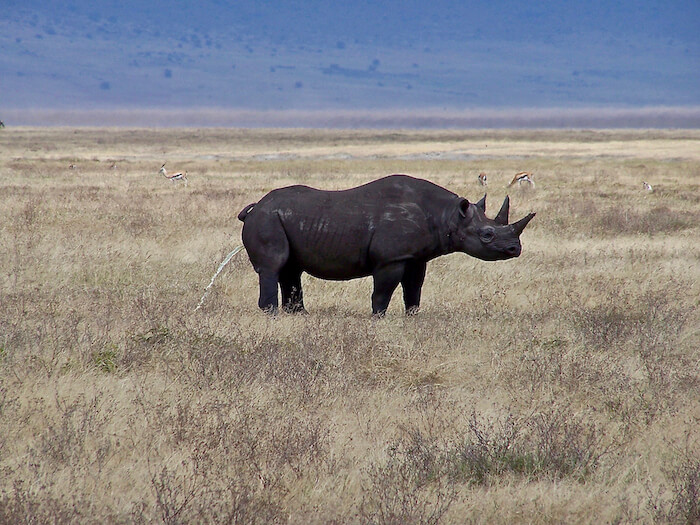
Ngorongoro Black Rhino
Have you seen a Giraffe Sit?
We saw a lot of giraffes on our African Photo Safari. The grass in this photo is not very tall. That is actually a giraffe sitting, Finding a giraffe sitting was one of the most interesting moments on our trip. We stayed for a bit and watched. It seemed pretty comfortable. We didn’t stay long enough to see it get up. That would have been a sight.
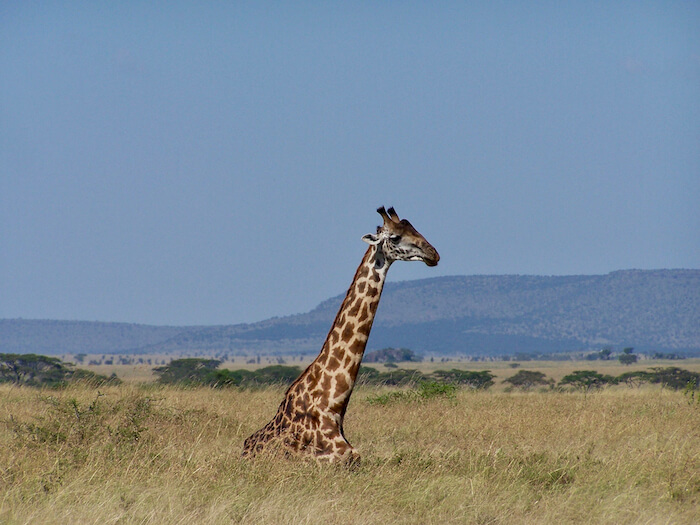
Giraffe Sitting Serengeti
Most giraffes that we saw were standing!
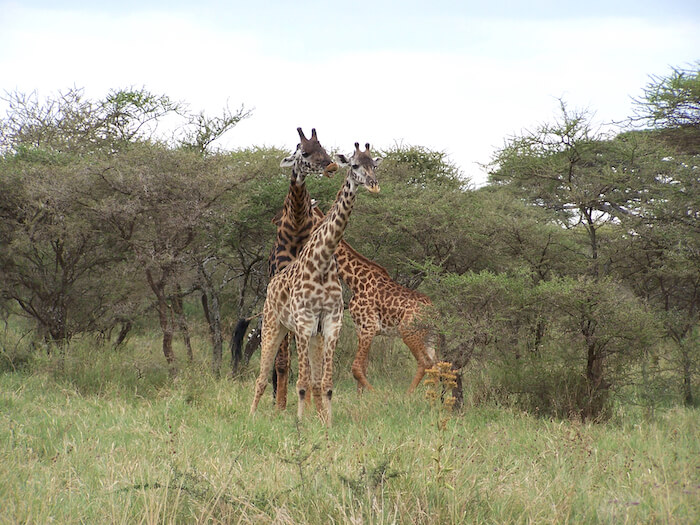
Giraffes, Serengeti
Follow the Zebra
Zebras crossing the road were a constant sight. At one point, there was a long line of zebras walking single file across the road. We waited at least 30 minutes before there was a space for us to cross. One of the interesting things that we learned about zebras is that anyone can lead the group. If a zebra starts walking in another direction and others follow, the entire group may turn around and go in that direction.
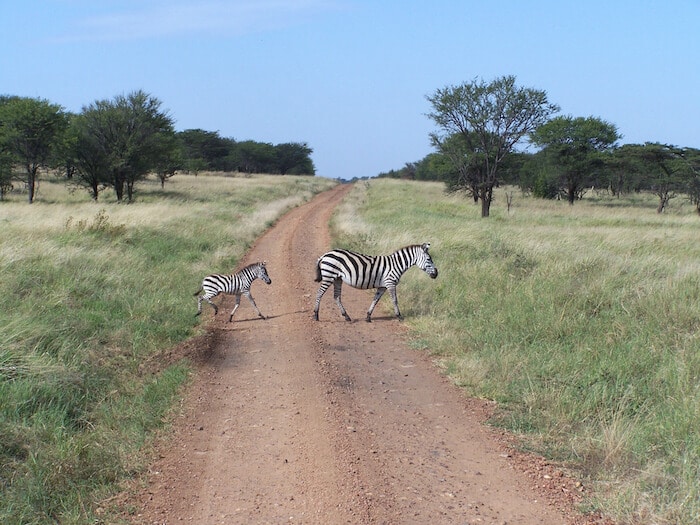
Zebra and baby Crossing the Road, Serengeti, Tanzania
Always Together Wildebeest and Zebras
Wildebeest and zebras travel together. They are symbiotic. One eats long grass (zebras) and the other short grass. One sees better (zebra) while the other hears better. The also both like to be on the open savannas as opposed to being in the bush. That makes them vulnerable to attack. Together, they are safer.
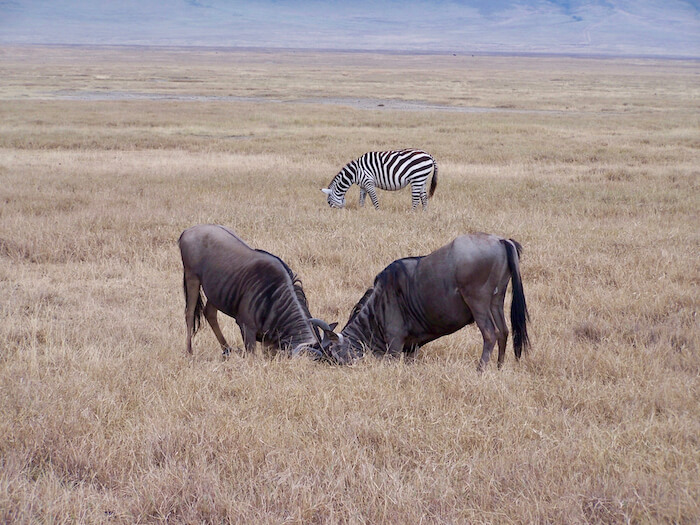
Two Wildebeest Sparring
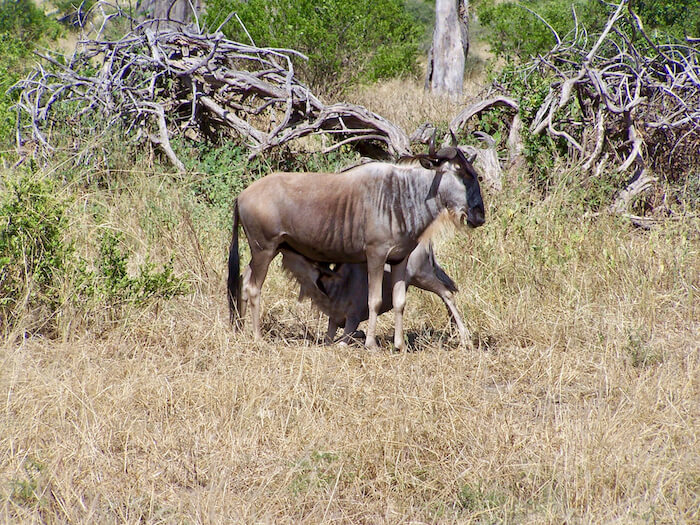
Wildebeest suckling
Lions, Lions and More Lions
Lions in the wild are wonderful sight to see. We saw many of them. While we were in a hot air balloon, we even saw a lion kill from above. They are indeed ferocious. Except, when they are sleeping. Then, they look like sweet kittens.
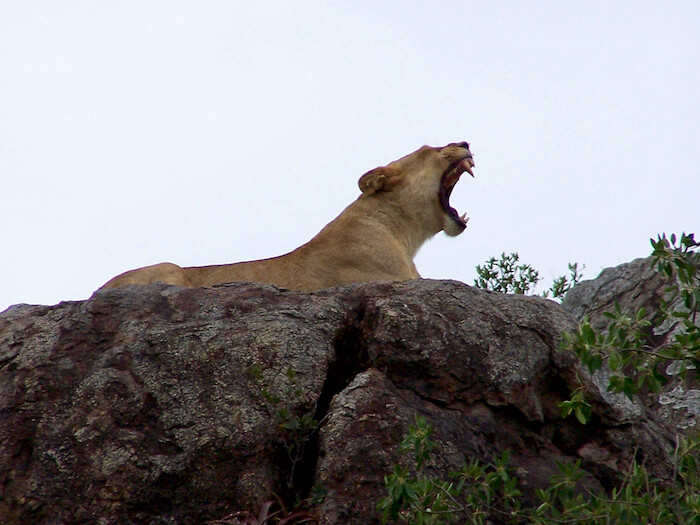
Lion on Rock, Serengeti
If you look closely below, you can see the adolescent male, just beginning to grow his mane.
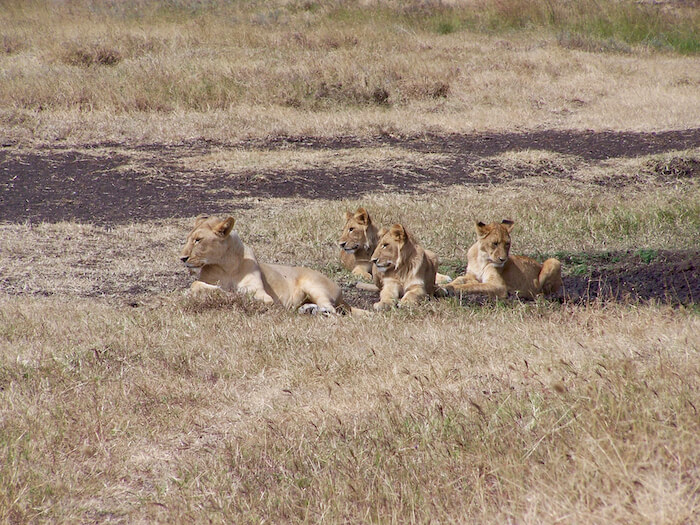
Lion Pride with adolescent males, Ngorongoro
And, my favorite two photos below. The lions look so peaceful here. Lions sleep most of the day.
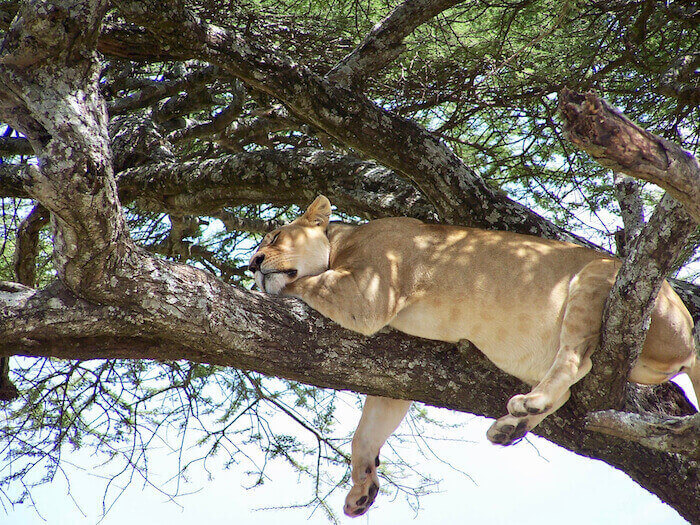
Lion Sleeping in a Tree, Serengeti
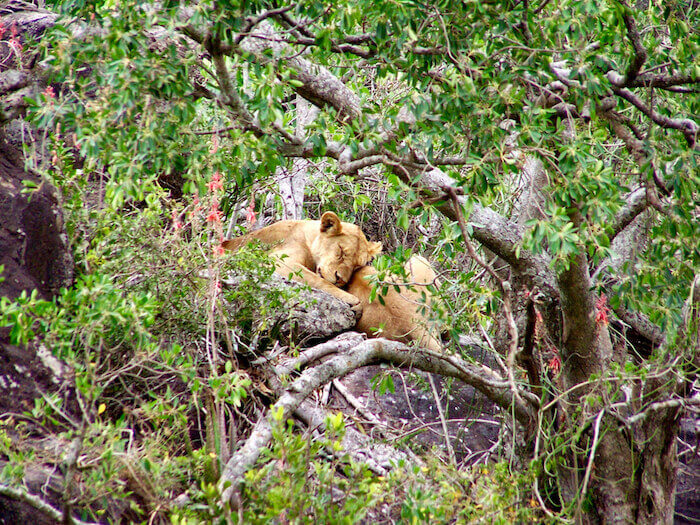
At Least 2 Lions Sleeping together, Serengeti
Balloon Ride over the Serengeti
This was one of the most spectacular experiences that we had in Africa. Arising at dawn. Floating above the savanna, watching the animals from above. When we landed the wildebeest scattered, running wildly. We were sorry to give them a fright. Then, champagne breakfast at our landing spot.
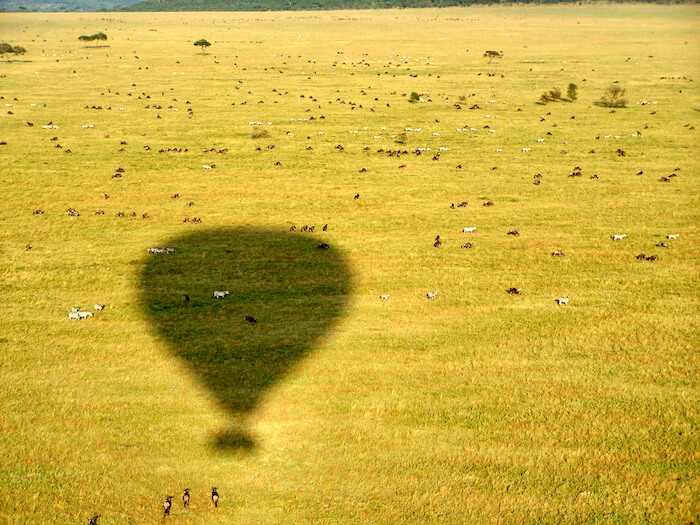
Serengeti Morning Balloon Flight
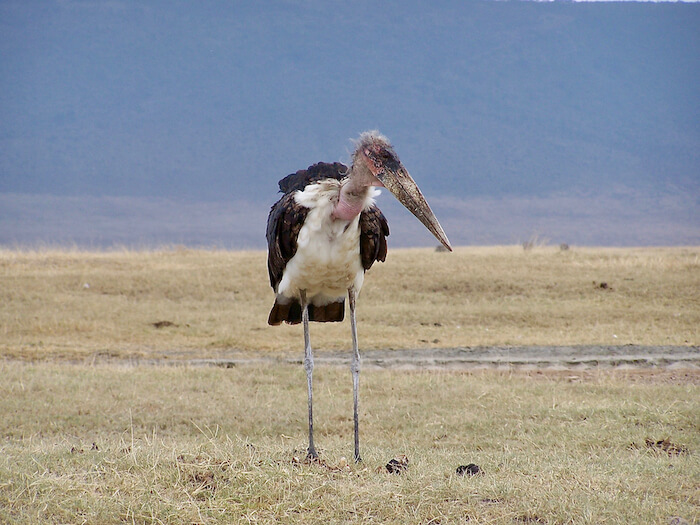
Ibis in Serengeti
Open Wide, Hippopotamus
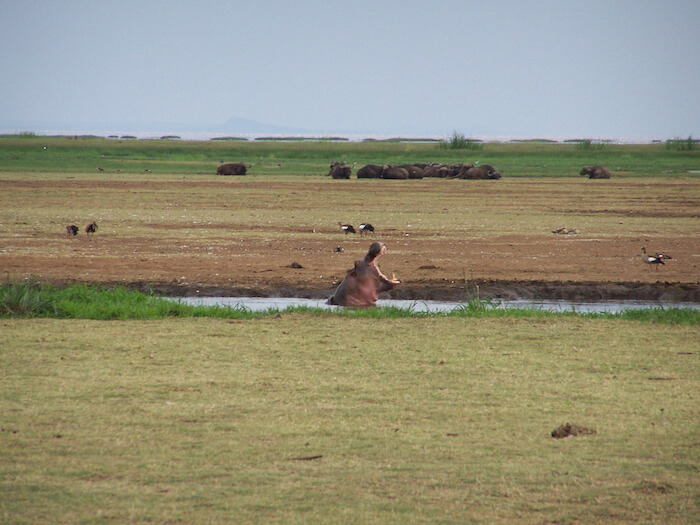
Hippo at Lake Manyara
This shot took a lot of patience and willingness to keep shooting. As we said above, we were using a point and shoot camera. Capturing the hippo with its mouth wide open took many shots. Finally, we captured it. My mother went to Africa 20 years before me. Read her observations 20 Years of Amazing & True Short Travel Stories by Mom
5 Tips for African Safari Photography
Trip Planning Tips
- Remember that you are there to enjoy the experience of seeing animals in their natural habitat. You don’t need to capture everything on film. Take time to watch, enjoy, observe.
- Do a tour with the fewest number of people and most flexibility. We had the opportunity to stop and watch quietly whenever we wanted. We saw a lot of noisy tour groups. If we had been in a group with people talking loudly, we would not have been able to watch the elephants for so long. The elephants would have become agitated and we would have had to leave.
- Your guide and driver matter. All of the tour groups have walkie talkies and radios. They tell each other where there are lions, kills, elephants, etc. Then all of the groups go racing to the same spot. That means you might see a kill, but you are with many other groups. Getting a good photo or a good viewing experience is unlikely in those situations. Our driver turned off the radio and we were free to explore and see whatever we saw.
Photography Tips
- Use the camera that you are most comfortable with. If you choose to buy a new camera for the trip, make sure to practice and become very familiar with it before leaving for Africa. You don’t wanted to be frustrated by your camera and fussing with it during the trip.
- Be patient and wait for the shot that you want. With a digital camera, there are different strategies. One of us (Sue) will shoot a lot of photos, knowing that some are going to be good and some will be deleted. Animals are moving so fast photography can sometimes be helpful. Reggie’s strategy is to set up and wait for the perfect picture. She will shoot a smaller number of photos, but most are perfect. Both strategies work. The key is to decide what kind of photographer you are and go with it.
BONUS TIP: Put the camera down and enjoy the experience. African Safari Pictures in your mind last a long time.
Have you been on an African Photography Safari? What to go on one? Leave a Comment or Question.
Please Pin and Share
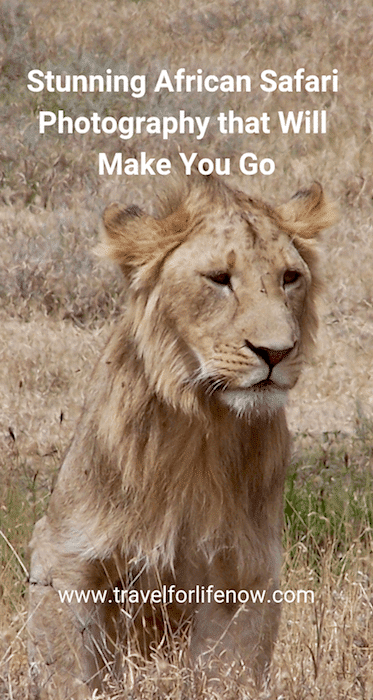
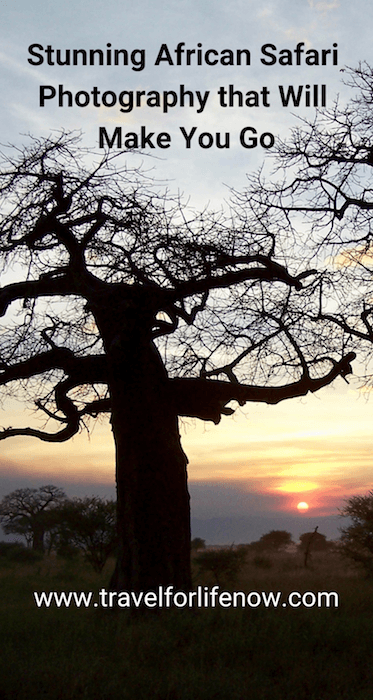

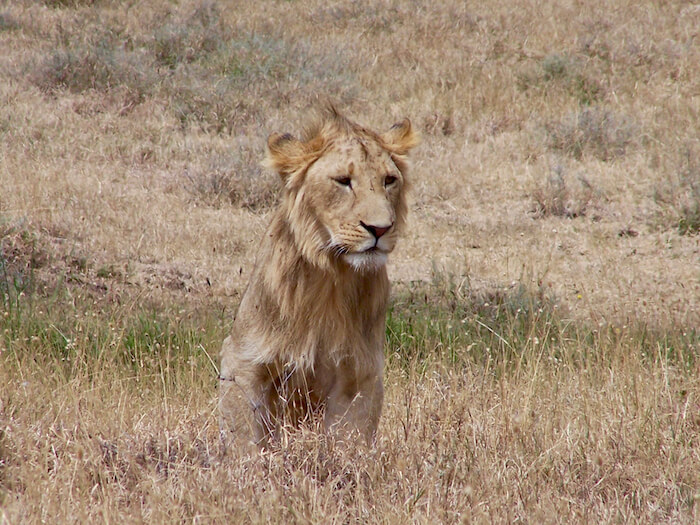
A safari experience like this is so HIGH on my bucket list… although I would probably burst into tears being so close to all these magical animals!
Kashlee-Thanks for your comment. Agreed. Safari is a very special experience.
Loved the photos! that elephant herd is so cute!
Fantastic post Sue, you have so many gooorgeous animal photos!!
I totally agree that you have to be patient. I think that is my main problem…I end up taking hundreds of photos, when I only really really love a few of them!
Anyway I especially love all your lion photos and wooooow for that Rhino pee!
Josy-Thanks. The Rhino still makes me smile. I think it’s okay to take a lot of photos if you are know accept that fact that you will only love a few.
Wow what a great blog. As a visual and a photographer, you had me from the start. I just love your evocative images and so makes me want to go.
Karen-Thanks. Hope that you’ll go sometime. Not sure that they do much motorroaming there.
I would love to do a photography safari. It looks like you saw so much amazing wildlife.
Tasha-Thanks. We did see amazing wildlife. It’s definitely worth going to Africa.
Such helpful tips! I love how much patience you had to capture such great photos. Also love the reminder to enjoy the trip while taking photos.
Fantastic photography and tips Sue, thanks so much for sharing and you’re right – I DO WANT TO GO… and see a black rhino pee and the elephants play in the mud.
You are absolutely right about the need for patience on safari, it pays off in so many ways! Some fantastic photos here. I’m heading back to Africa soon and it reminds me why I’m so excited to see some wildlife again!
I want to go on safari soooooooo bad! Thank you for letting me tag along through your gorgeous photos and descriptive words. Closest thing to the 1,000s of miles (and dollars) that keep me from being there myself! 🙂 Sage Scott, the Everyday Wanderer
So cool that you got to see so many babies on this trip! And I love some of these shots– the ibis, the hippo, the tiny elephant taking a mud bath 🙂 I’m determined to save up for a safari trip one day, so now I’ve got Tanzania to add to the list of potential destinations!
Thanks Dylan. Tanazania is a great place to do a Safari. Hope you get there.
This has touched my heart through the experience you got, as an East African guide, both Tanzania and Kenya I have learnt some ideas from your blog and sure will practice some to create a lifetime memory to my upcoming clients.
Thanks for sharing and welcoming you back again in Tanzania and east Africa at large.